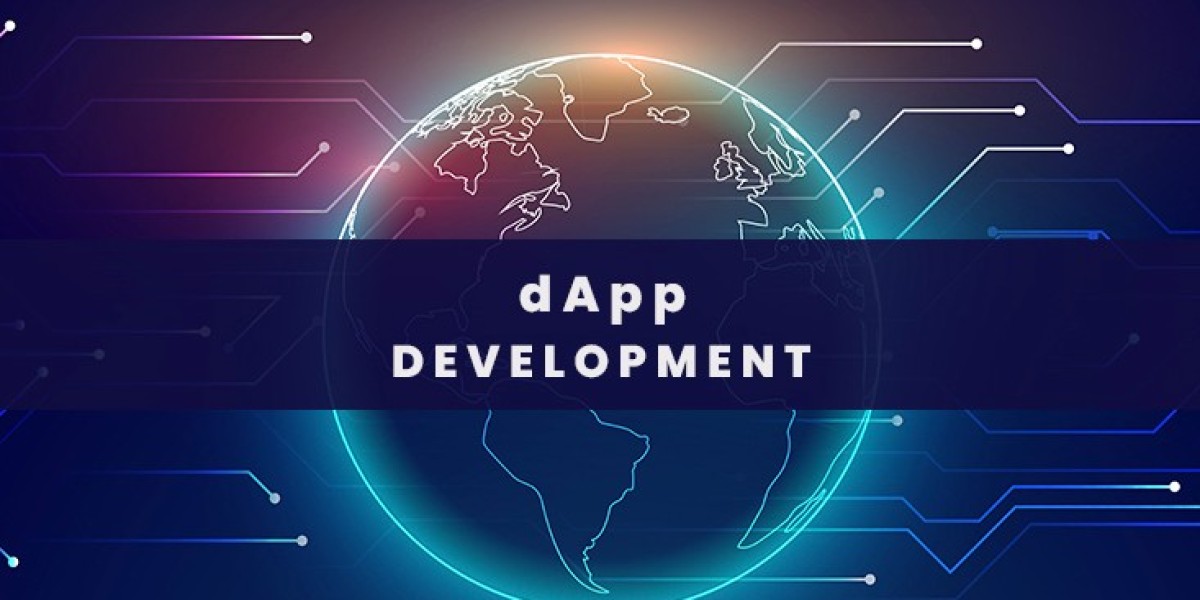The revolution won’t be centralized — it’s already decentralized.
That's not just a catchy slogan. It’s a reality quietly transforming finance, gaming, healthcare, and identity systems as we know them. Thanks to dApp development companies worldwide, the rise of decentralized applications (dApps) is transforming how we interact with the digital world. Powered by blockchain and Web3 principles, these applications operate on peer-to-peer networks, empowering users to control their data, assets, and experience.
Let’s take a tour of the top 10 dApps that are making waves right now, challenging traditional institutions, empowering communities, and hinting at a more autonomous digital future.
1. Uniswap: The Face of DeFi
Category: Decentralized Finance (DeFi)
Blockchain: Ethereum
Uniswap remains the undisputed king of decentralized exchanges (DEXs). It enables users to swap ERC-20 tokens directly from their wallets, eliminating the need for intermediaries. What sets it apart is its automated market maker (AMM) model, which uses smart contracts instead of order books to determine prices.
Uniswap has enabled billions in trading volume and set the benchmark for other DeFi protocols. Its impact on financial democratization is immense, showing the world that users don't need a bank to be a banker.
2. Lens Protocol: Redefining Social Media
Category: Social Media/Web3
Blockchain: Polygon
Lens Protocol is not just another social platform; it’s a framework for building decentralized social apps, where users own their content, followers, and profiles as NFTs. No more account bans or algorithm games. Creators are free to port their identity across apps without giving up control.
This dApp serves as a beacon for what Web3 social experiences could look like: interoperable, creator-owned, and censorship-resistant, providing momentum to Web3 development services that aim to break Big Tech's monopoly.
3. Audius: A Revolution for Musicians
Category: Music & Streaming
Blockchain: Solana + Ethereum
Audius offers a decentralized alternative to Spotify and Apple Music, giving artists direct control over their music and revenue. It eliminates the middleman, meaning artists receive instant and transparent payments through its native AUDIO token.
With prominent names like Deadmau5 and Skrillex backing it, Audius is showing how blockchain can empower the creative economy and redefine royalty structures.
4. Aave: The Lending Protocol Powering DeFi
Category: DeFi
Blockchain: Ethereum, Polygon, Avalanche
Aave is a decentralized liquidity protocol that lets users lend and borrow cryptocurrencies without intermediaries. What's unique? It introduced flash loans, uncollateralized loans that must be repaid within a single transaction block, a powerful tool for arbitrage and DeFi strategy.
It’s a pivotal project in DeFi, showcasing how financial systems can function without centralized entities, relying solely on smart contracts and trustless logic.
5. Steemit: The First Web3 Blogging Platform
Category: Social/Blogging
Blockchain: Steem
Before Mirror and Lens Protocol, there was Steemit, the first central platform where content creators earn crypto for their posts. Users upvote content, and the most engaging posts get rewarded with Steem tokens.
It introduced the concept of tokenized influence, sparking early interest in content monetization and laying the foundation for today's Web3 content networks.
6. Mirror.xyz: Decentralized Publishing Redefined
Category: Writing & Publishing
Blockchain: Ethereum
Mirror merges Medium-style blogging with NFTs, DAOs, and crowdfunding. Writers can publish content, tokenize it, and raise funds from readers. It’s part publishing tool, part Web3 Kickstarter.
For writers, it offers a new way to own their IP, earn directly from fans, and avoid platform control. For readers, it’s about investing in what you believe, with your wallet and attention.
7. OpenSea: Marketplace of the Metaverse
Category: NFT Marketplace
Blockchain: Ethereum, Polygon, Arbitrum
OpenSea is the largest and most popular NFT marketplace. It allows users to buy, sell, and trade NFTs — whether they're art, domain names, game items, or virtual land.
But it’s more than a marketplace. OpenSea serves as the gateway to the NFT economy, allowing creators, collectors, and brands to engage with this rapidly expanding sector. It embodies the promise of actual digital ownership and verification through blockchain.
8. Golem: Decentralized Cloud Computing
Category: Infrastructure/Computing
Blockchain: Ethereum
Imagine renting your unused computer processing power to others, and getting paid in crypto. That’s precisely what Golem offers. It's a decentralized computing network where users can buy and sell idle CPU and GPU resources.
From 3D rendering to AI model training, Golem is disrupting cloud giants like AWS and Google Cloud by offering a cheaper, decentralized alternative. A massive leap for global computer accessibility.
9. Brave & BAT: Rewarding Your Attention
Category: Browsing/Advertising
Blockchain: Ethereum
The Brave browser, paired with the Basic Attention Token (BAT), rethinks online advertising. Users can opt in to view ads and get paid for their attention. Meanwhile, advertisers gain transparency and better targeting.
It’s a rare win-win-win for users, advertisers, and publishers, proving that privacy and monetization don't have to be mutually exclusive.
10. dYdX: High-Speed, No Middleman Trading
Category: Decentralized Derivatives
Blockchain: Cosmos (Previously Ethereum Layer 2)
dYdX brings sophisticated financial tools to the decentralized world. It offers perpetual contracts, margin trading, and high-speed execution, without relying on traditional brokers or platforms.
It’s a high-performance DEX that rivals centralized exchanges in speed and liquidity, thanks to its custom-built Cosmos chain. As more traders migrate from traditional platforms, dYdX is leading the charge toward the future of decentralized exchange development services.
Why These dApps Matter
These 10 dApps aren't just popular, they represent the cutting-edge use cases of blockchain and decentralized technology. Let’s break down their significance:
Financial inclusion: Aave, Uniswap, and dYdX are developing global financial tools that are accessible to anyone with a wallet.
Creator empowerment: Audius, Mirror, and Steemit give artists and writers direct monetization paths.
Decentralized identity & control: Lens and Brave put power back in the hands of users — not corporations.
Infrastructure innovation: Golem and OpenSea push the boundaries of decentralized computing and ownership.
As Web3 development services continue to evolve, these platforms serve as templates, inspiring developers to build trustless applications across numerous industries, including healthcare, logistics, and education.
The Role of Development Companies in This Shift
None of these dApps would be possible without the efforts of visionary dApp development companies. These firms specialize in innovative contract architecture, decentralized logic, frontend dApp UX, token integration, and secure deployment across various blockchains.
Whether you're building a social platform like Lens or a lending engine like Aave, a skilled dApp development team ensures performance, security, and decentralization go hand in hand.
In addition, decentralized exchange development services are now in high demand as more entrepreneurs launch their DEXs to compete or niche down with community-driven liquidity pools. These services provide everything from KYC integration to Layer 2 scalability to AMM engine customizations.
Final Thoughts: A Decentralized Tomorrow
The 2020s are shaping up to be the decade when decentralized systems move from the fringe to the mainstream. As blockchain technology matures, the applications being built today will define how we work, play, earn, and connect tomorrow.
These dApps are not just apps, they're economic experiments, social statements, and digital rebellions against centralization. As this movement grows, partnering with the right tech experts becomes increasingly crucial.








